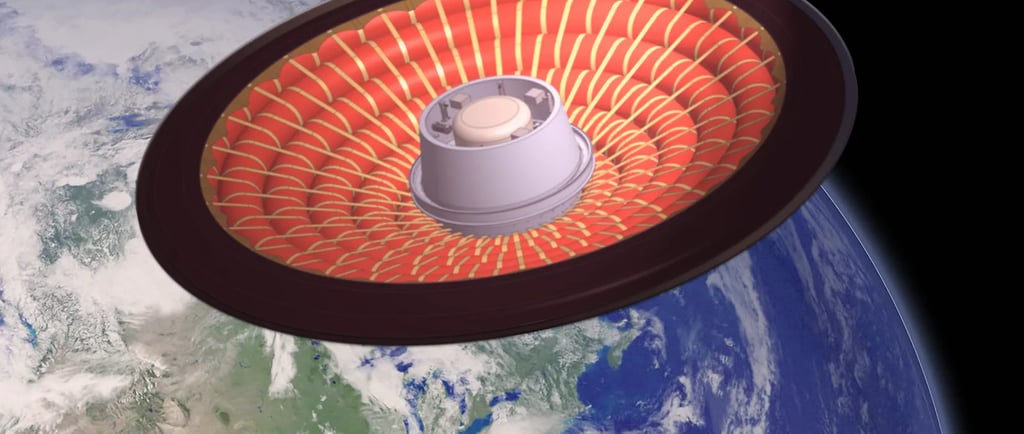Revolutionizing Atmospheric Re-Entry: The Promise of Inflatable Decelerators


Introduction to Inflatable Decelerators
The aerospace industry continually seeks innovative solutions to enhance payload delivery systems. NASA's recent low-Earth orbit flight test of an inflatable decelerator provides a significant insight into a groundbreaking technology—the inflatable aeroshell. This technology aims to redefine how we approach atmospheric re-entry challenges, particularly when delivering heavy payloads to celestial bodies with an atmosphere.
The Need for Advanced Heat Shields
Traditional rigid aeroshells, which have dominated spacecraft design, are constrained by their shroud size. As rockets ascend into space, the shroud's dimensions limit the potential payload size, impacting mission flexibility and capability. NASA faces the ongoing challenge of developing a system that allows larger payload deployments without compromising safety and efficiency during re-entry.
How the Inflatable Aeroshell Works
The inflatable aeroshell presents a promising alternative. During the low-Earth orbit flight test, the inflatable decelerator was deployed at a scale significantly larger than conventional rigid designs. This innovative concept utilizes a highly resilient structure that expands during descent, effectively acting as an aerodynamic shield against the extreme temperatures and pressures experienced during re-entry.
By employing a cross-cutting aeroshell design, the inflatable decelerator not only enhances thermal protection but also reduces the overall mass of the heat shield. This reduction is pivotal, enabling rockets to transport heavier loads without the added complication of shroud restrictions. As this technology progresses, it is poised to reshape payload delivery in future NASA missions, offering unprecedented capabilities in accommodating a variety of mission profiles.
Conclusion and Future Implications
The results of NASA's flight test demonstrate the viability of inflatable aeroshells in atmospheric re-entry missions. As developers continue to refine and perfect this technology, the implications for space exploration are vast. An inflatable decelerator could allow heavier probes, landers, and potentially human missions to land safely on planets with atmospheres, transforming our approach to interplanetary missions.
In conclusion, the ongoing development of inflatable aeroshells signals a significant leap forward in aerospace technology. By addressing the limitations of current rigid aeroshells, we stand on the brink of a new era in payload delivery, one that embraces lighter, more effective structures capable of withstanding the rigors of atmospheric re-entry.
